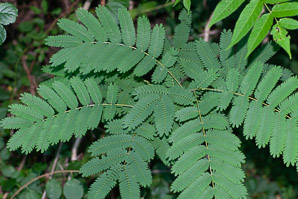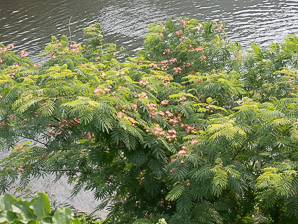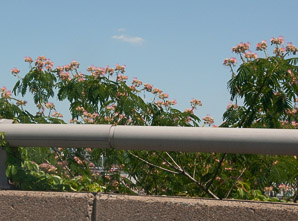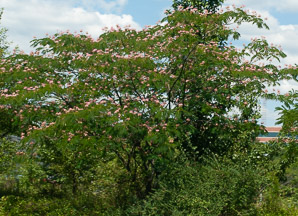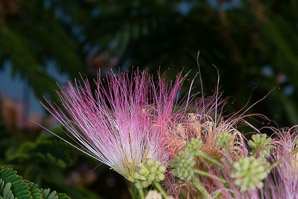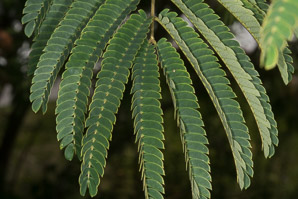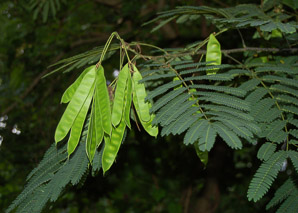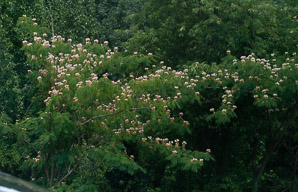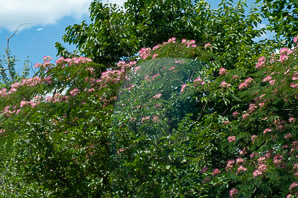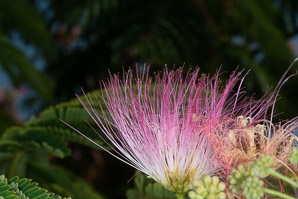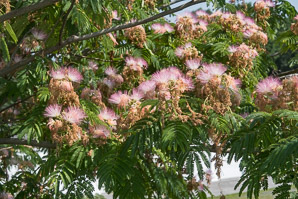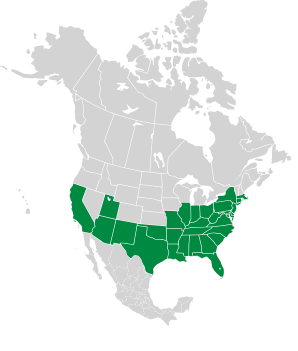
|
Albizia julibrissin Durazz. Silktree, Persian silktree, pink silktree, mimosa tree
Silktree is native to southwestern and eastern Asia. This species is sometimes called mimosa, but that name also applies to several unrelated species of acacias. Introduced to North America as ornamental trees in the mid-1700s, they have escaped and are now considered weeds or even invasives in some areas. Identification: Trees are 16-39′ (5-12 m) high, with dark greenish-gray bark that develops vertical stripes as it ages. Leaves are bipinnate, 8-18″ (20-45 cm) × 4½-10″ (12-25 cm). Each leaf contains 6-12 pairs of pinnae; each of these in turn have 20-30 pairs of leaflets. Flowers appear in attractive dense hemispherical clusters like soft brushes or pom-poms, pink with white centers. The flowers are small but the stamens are pink, silky, and ¾-1″ (2-3 cm) in length. The clusters are about 3″ (8 cm) in diameter, and appear from July to August. Fruits are flat brown pods 4-8″ (10-20 cm) × ¾-⅞″ (2-2.5 cm). Edibility: Young leaves and flowers are edible when cooked. Medical: Many medicinal properties, including a few contradictory ones, are ascribed to this species. Online References:
The USDA Forest Service's Fire Effects Information Database Plants for a Future, a resource and information centre for edible and otherwise useful plants The Plant Conservation Alliance’s Alien Plant Working Group Least Wanted List 7/2/2010 · Stansbury Mill Rd, Phoenix, Maryland · ≈ 3 × 2′ (98 × 65 cm) 6/30/2023 · Harpers Ferry, West Virginia 7/2/2010 · Alexandria, Virginia
Albizia julibrissin description by Thomas H. Kent, last updated 14 Sep 2023. © FloraFinder.org. All rights reserved. |
7/19/2017 · West Virginia · ≈ 5 × 3½″ (13 × 9.2 cm) 7/19/2017 · West Virginia · ≈ 6 × 4″ (15 × 10 cm) 7/2/2010 · Alexandria, Virginia 7/2/2010 · Alexandria, Virginia 7/19/2017 · West Virginia · ≈ 5 × 3½″ (13 × 9.2 cm) Range: Zones 3-9:
|
